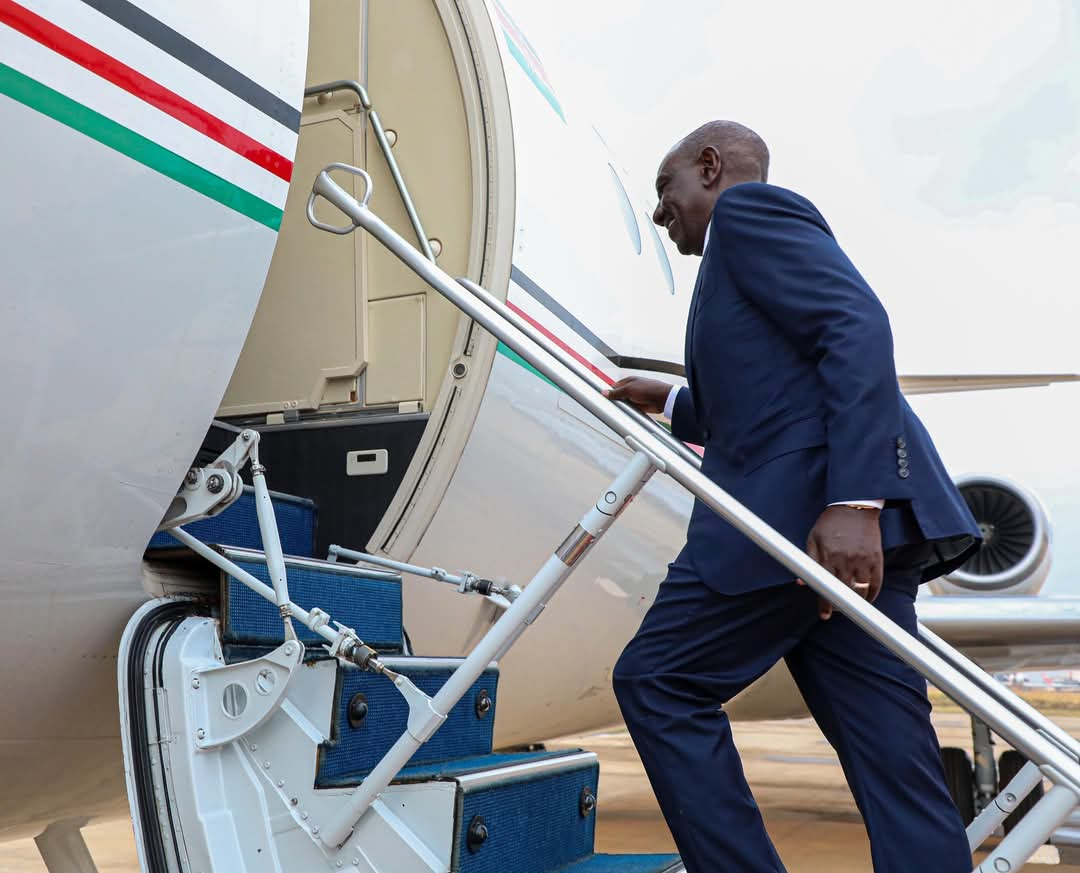
Ruto's Diary: Champions development, sports, AU reforms
President William Ruto's weekly round-up
He will also be the chief guest at the official launch of the Grand Ethiopian Renaissance Dam (GERD)
In Summary

Audio By Vocalize

President William Ruto has departed for Addis Ababa,
Ethiopia, to attend the second Africa Climate Summit and the inauguration of
the Grand Ethiopian Renaissance Dam.
The summit brings together African Heads of State and
Government to push forward the continent’s climate action and green growth
agenda.
President Ruto will unveil the report “From Nairobi to Addis
Ababa: Africa’s Journey of Climate Action and Partnership”, which reviews
progress since the 2023 Nairobi Declaration and charts future climate pathways.
While in Addis, the Kenyan leader will witness the signing
of a Cooperation Framework for the Africa Green Industrialisation Initiative
(AGII).
The agreement will unite African governments, financiers,
the African Continental Free Trade Area (AfCFTA) Secretariat, and private
sector players to accelerate renewable energy projects and green industrial
investments.
The framework will provide financial and technical support,
mobilise investments, and align with initiatives such as the Accelerated
Partnership for Renewables in Africa and the Joint Project Preparation
Facility.
According to State House spokesperson, Hussein Mohamed, this
will fast-track bankable projects across the continent.
As chair of the Committee of African Heads of State on
Climate Change (CAHOSCC), President Ruto is expected to push for fair resource
valuation, affordable climate financing, debt sustainability, and stronger
African positions in global climate negotiations.
He will also attend the Africa-CARICOM dialogue, focusing on
debt management, energy transition, and joint responses to global challenges.
Separately, President Ruto will be the chief guest at the
official launch of the Grand Ethiopian Renaissance Dam (GERD), described as a
symbol of Africa’s self-reliance and a milestone for Ethiopia.
For Kenya, the Ethiopia-Kenya power interconnector already
delivers clean, affordable electricity that strengthens energy security,
stabilises supply during droughts, and supports industrial growth.
Together with the Kenya-Tanzania interconnector, these links
are expected to boost power trade, improve grid stability, and advance East
Africa’s integration through shared renewable energy.
Kenya’s peak power demand has now surpassed 2,392 megawatts,
and the government says additional capacity is critical to powering special
economic zones, ICT hubs, industrial parks, and agro-processing industries.
According to State House, the partnership supports Kenya’s Vision
2030 and the Bottom-Up Economic Transformation Agenda by expanding renewable
energy, boosting competitiveness, empowering communities, and deepening
regional integration.

President William Ruto's weekly round-up